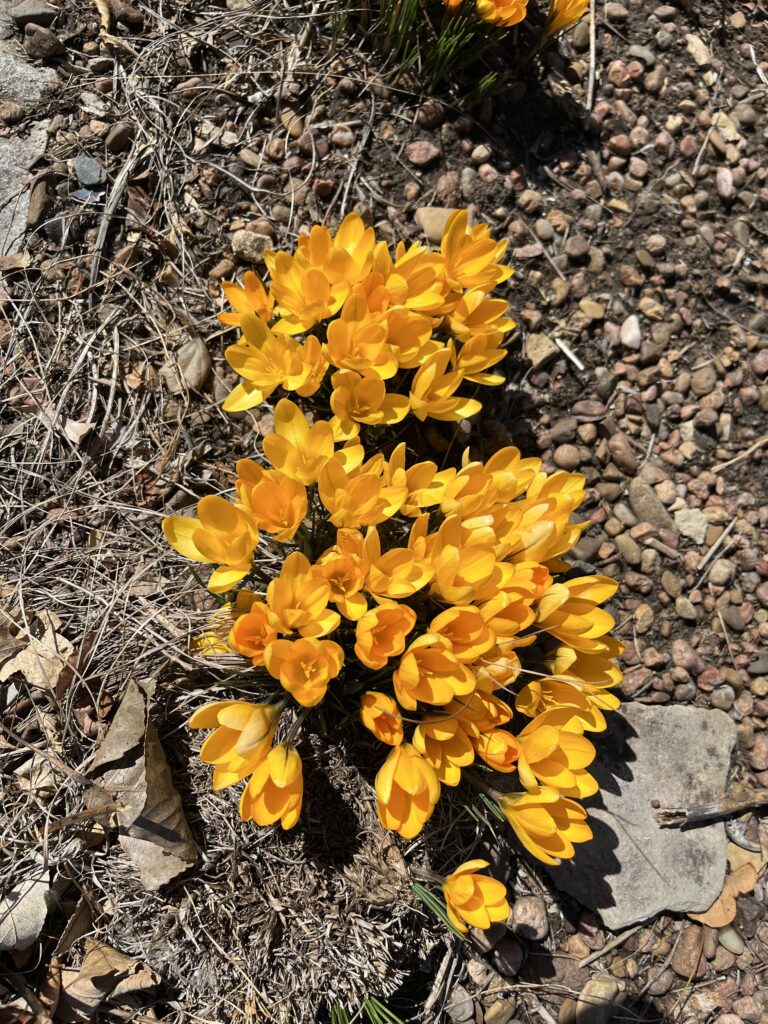While March can still be cold in Kansas and we can get some significant snow and ice, there are still opportunities to spend time in your garden. Here is a March gardening checklist that will prepare your garden to thrive in the coming year.
Prune trees and shrubs
This is a perfect time to be pruning trees and shrubs. Maybe there is a branch that is always in the way while you mow, or shrubs that are encroaching on a walkway. Cut them back. Keep in mind to only prune shrubs that flower on new wood. Pruning shrubs like forsythia and lilacs will remove blooms for this spring. Spring blooming shrubs can be pruned after they are done blooming in late April or May so they have time to set new buds for next year. Check out this blog by Katie, Old Wood, New Buds: A Pruning Guide.

Cut back flower beds
Now through March is the time to trim back ornamental perennials and grass stalks to clear room for new growth. By cutting these plants back it you allow sunlight to reach the crowns and warm the soil. We have talked about it several times, but it is worth repeating – if you can help it don’t carry stalks away from your garden. Leave them as natural mulch. These stems and stalks harbor native pollinators that you want to keep in your landscape. If thatch is too thick, remove it to an obscure place in your yard or along the alley.
Apply compost to soil
If you haven’t already, empty out your compost bin and put it on your garden. Prepare your garden soil if it’s dry enough to work. Dig in compost and other amendments when your soil can be worked. Only do this if your soil is dry enough.
How do you know when it’s safe to work the soil? When a ball of soil crumbles easily after being squeezed together in your hand, it’s dry enough. With our clay soils, avoid compacting your garden soil. Wait until it’s dried out before tilling, planting, or even walking in the garden beds.
Loosen mulch
Mulch has a tendency to fuse together, especially with mulch more than a couple inches thick. This cake layer along the top resists moisture penetration and seals off the soil, restricting good air exchange. It is good each year to rough up the mulch with a fork or rake to break that seal. This will open up the soil to moisture and positive air movement. Tree and shrub mulch rings and shrub borders will benefit the most from this exercise. While you are at it, maybe a fresh layer of mulch is needed. I typically have 2-3 inches of mulch around these woody plants.

Continue to gather ideas
There is so much information available to gardeners these days. Choose plants that create habitat and attract wildlife to your yard. Review your garden journal from last year. Read horticulture magazines. Attend the lectures and presentations at your local garden shows such as the Harvey County Garden Show on March 25 and 26 here at the Arboretum.
Regardless of what season the calendar says, there is always something to do in the garden. Spring is coming, so now is the time to get ready. I don’t know about you, but I am ready to see some blooming plants again.


